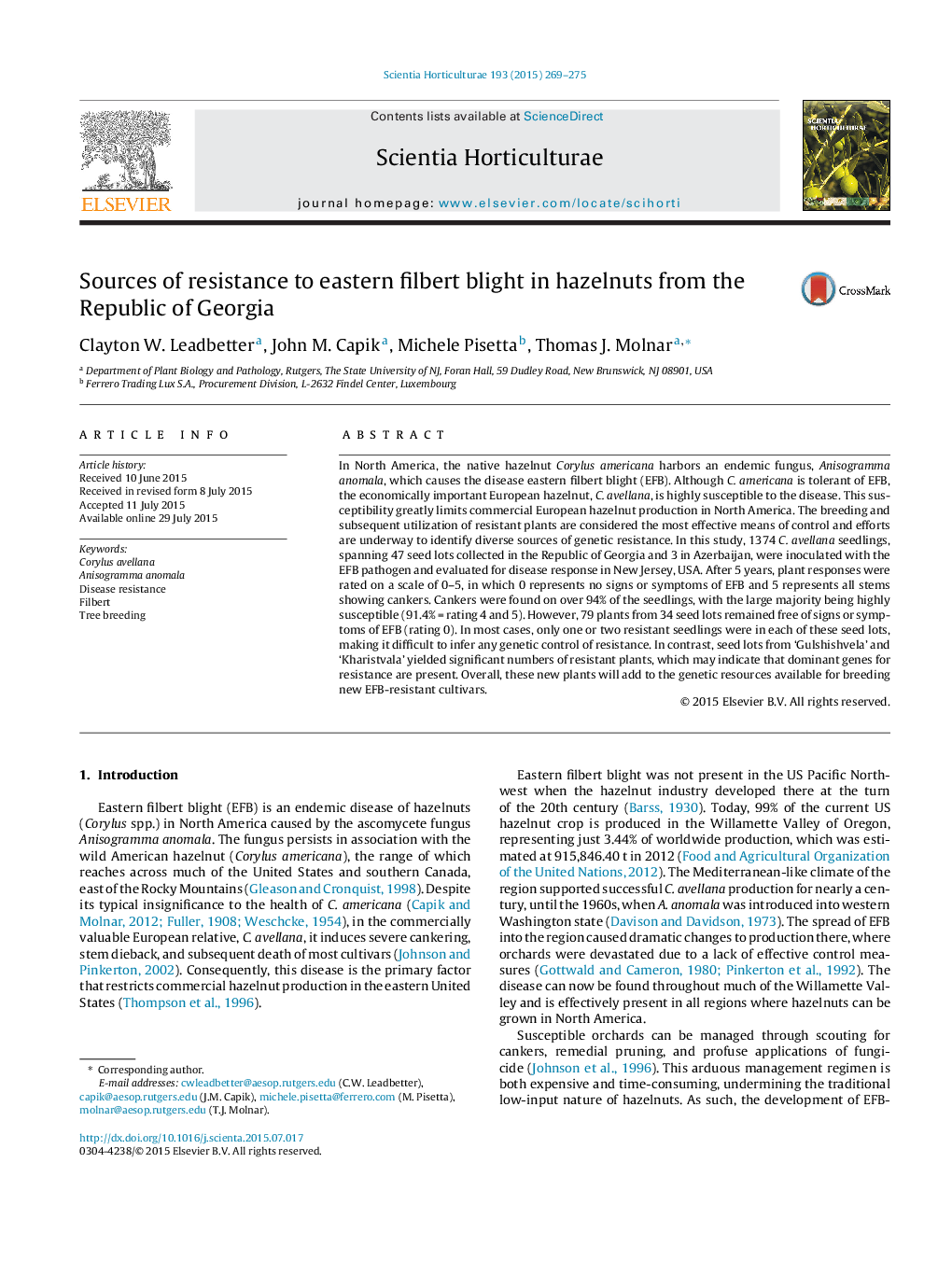| کد مقاله | کد نشریه | سال انتشار | مقاله انگلیسی | نسخه تمام متن |
|---|---|---|---|---|
| 4566206 | 1628805 | 2015 | 7 صفحه PDF | دانلود رایگان |
• Hazelnuts from the Republic of Georgia were subjected to eastern filbert blight.
• The collection comprised 1374 seedlings from 50 distinct seed lots.
• Cankers were found on over 94% of the seedlings, with most highly susceptible.
• However, 79 plants from 34 different seed lots remained free of disease.
• New resistant plants add to the genetic pool for disease resistance breeding.
In North America, the native hazelnut Corylus americana harbors an endemic fungus, Anisogramma anomala, which causes the disease eastern filbert blight (EFB). Although C. americana is tolerant of EFB, the economically important European hazelnut, C. avellana, is highly susceptible to the disease. This susceptibility greatly limits commercial European hazelnut production in North America. The breeding and subsequent utilization of resistant plants are considered the most effective means of control and efforts are underway to identify diverse sources of genetic resistance. In this study, 1374 C. avellana seedlings, spanning 47 seed lots collected in the Republic of Georgia and 3 in Azerbaijan, were inoculated with the EFB pathogen and evaluated for disease response in New Jersey, USA. After 5 years, plant responses were rated on a scale of 0–5, in which 0 represents no signs or symptoms of EFB and 5 represents all stems showing cankers. Cankers were found on over 94% of the seedlings, with the large majority being highly susceptible (91.4% = rating 4 and 5). However, 79 plants from 34 seed lots remained free of signs or symptoms of EFB (rating 0). In most cases, only one or two resistant seedlings were in each of these seed lots, making it difficult to infer any genetic control of resistance. In contrast, seed lots from ‘Gulshishvela’ and ‘Kharistvala’ yielded significant numbers of resistant plants, which may indicate that dominant genes for resistance are present. Overall, these new plants will add to the genetic resources available for breeding new EFB-resistant cultivars.
Journal: Scientia Horticulturae - Volume 193, 22 September 2015, Pages 269–275
